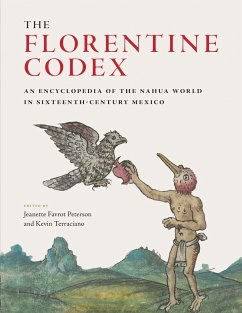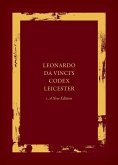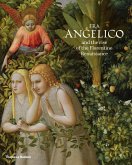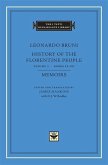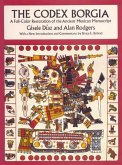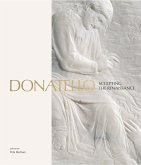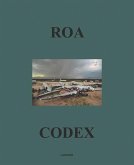The Florentine Codex
An Encyclopedia of the Nahua World in Sixteenth-Century Mexico
Herausgeber: Peterson, Jeanette Favrot; Trerraciano, Kevin
The Florentine Codex
An Encyclopedia of the Nahua World in Sixteenth-Century Mexico
Herausgeber: Peterson, Jeanette Favrot; Trerraciano, Kevin
- Gebundenes Buch
- Merkliste
- Auf die Merkliste
- Bewerten Bewerten
- Teilen
- Produkt teilen
- Produkterinnerung
- Produkterinnerung
Scholars explore the most significant trove of Nahua culture and language: an illustrated manuscript compiled after the Spanish conquest by a Franciscan friar with many indigenous authors and painters.
Andere Kunden interessierten sich auch für
![Leonardo da Vinci's Codex Leicester: A New Edition Leonardo da Vinci's Codex Leicester: A New Edition]() Leonardo da Vinci's Codex Leicester: A New Edition32,99 €
Leonardo da Vinci's Codex Leicester: A New Edition32,99 €![Fra Angelico and the rise of the Florentine Renaissance Fra Angelico and the rise of the Florentine Renaissance]() Carl Brandon StrehlkeFra Angelico and the rise of the Florentine Renaissance32,99 €
Carl Brandon StrehlkeFra Angelico and the rise of the Florentine Renaissance32,99 €![The Archimedes Codex The Archimedes Codex]() Reviel NetzThe Archimedes Codex11,99 €
Reviel NetzThe Archimedes Codex11,99 €![History of the Florentine People History of the Florentine People]() Leonardo BruniHistory of the Florentine People34,99 €
Leonardo BruniHistory of the Florentine People34,99 €![The Codex Borgia The Codex Borgia]() Gisele DiAzThe Codex Borgia22,99 €
Gisele DiAzThe Codex Borgia22,99 €![Donatello Donatello]() Donatello39,99 €
Donatello39,99 €![ROA Codex ROA Codex]() L. LippardROA Codex74,99 €
L. LippardROA Codex74,99 €-
-
-
Scholars explore the most significant trove of Nahua culture and language: an illustrated manuscript compiled after the Spanish conquest by a Franciscan friar with many indigenous authors and painters.
Hinweis: Dieser Artikel kann nur an eine deutsche Lieferadresse ausgeliefert werden.
Hinweis: Dieser Artikel kann nur an eine deutsche Lieferadresse ausgeliefert werden.
Produktdetails
- Produktdetails
- Verlag: University of Texas Press
- Seitenzahl: 256
- Erscheinungstermin: 10. September 2019
- Englisch
- Abmessung: 281mm x 229mm x 25mm
- Gewicht: 1290g
- ISBN-13: 9781477318409
- ISBN-10: 1477318402
- Artikelnr.: 56394918
- Herstellerkennzeichnung
- Libri GmbH
- Europaallee 1
- 36244 Bad Hersfeld
- gpsr@libri.de
- Verlag: University of Texas Press
- Seitenzahl: 256
- Erscheinungstermin: 10. September 2019
- Englisch
- Abmessung: 281mm x 229mm x 25mm
- Gewicht: 1290g
- ISBN-13: 9781477318409
- ISBN-10: 1477318402
- Artikelnr.: 56394918
- Herstellerkennzeichnung
- Libri GmbH
- Europaallee 1
- 36244 Bad Hersfeld
- gpsr@libri.de
Edited by Jeanette Favrot Peterson and Kevin Terraciano
1. Preface and Acknowledgments
2. Introduction. An Encyclopedia of Nahua Culture: Context and Content (Kevin
Terraciano)
3. Part I. The Art of Translation
* Chapter 1. Images in Translation: A Codex “Muy Historiado” (Jeanette
Favrot Peterson)
* Chapter 2. On the Reception of the Florentine Codex: The First
Italian Translation (Ida Giovanna Rao)
* Chapter 3. Reading between the Lines of Book 12 (Kevin Terraciano)
* Chapter 4. The Art of War, the Working Class, and Snowfall:
Reflections on the Assimilation of Western Aesthetics (Pablo
Escalante Gonzalbo)
4. Part II. Lords: Royal and Sacred
* Chapter 5. Surviving Conquest: Depicting Aztec Deities in Sahagún’s
Historia (Eloise Quiñones Keber)
* Chapter 6. Fashioning Conceptual Categories in the Florentine Codex:
Old-World and Indigenous Foundations for the Rulers and the Gods
(Elizabeth Hill Boone)
* Chapter 7. Teotl and Diablo: Indigenous and Christian Conceptions of
Gods and Devils in the Florentine Codex (Guilhem Olivier)
5. Part III. Ordering the Cosmos
* Chapter 8. Ecology and Leadership: Pantitlan and Other Erratic
Phenomena (Barbara E. Mundy)
* Chapter 9. Bundling Natural History: Tlaquimilolli, Folk Biology, and
Book 11 (Molly H. Bassett)
* Chapter 10. Powerful Words and Eloquent Images (Diana Magaloni
Kerpel)
6. Part IV. Social Discourse and Deviance
* Chapter 11: Rhetoric as Acculturation: The Anomalous Book 6 (Jeanette
Favrot Peterson)
* Chapter 12. Flowers and Speech in Discourses on Deviance in Book 10
(Lisa Sousa)
* Chapter 13. Parts of the Body: Order and Disorder (Ellen T. Baird)
7. Bibliography
8. Contributors
9. Index
2. Introduction. An Encyclopedia of Nahua Culture: Context and Content (Kevin
Terraciano)
3. Part I. The Art of Translation
* Chapter 1. Images in Translation: A Codex “Muy Historiado” (Jeanette
Favrot Peterson)
* Chapter 2. On the Reception of the Florentine Codex: The First
Italian Translation (Ida Giovanna Rao)
* Chapter 3. Reading between the Lines of Book 12 (Kevin Terraciano)
* Chapter 4. The Art of War, the Working Class, and Snowfall:
Reflections on the Assimilation of Western Aesthetics (Pablo
Escalante Gonzalbo)
4. Part II. Lords: Royal and Sacred
* Chapter 5. Surviving Conquest: Depicting Aztec Deities in Sahagún’s
Historia (Eloise Quiñones Keber)
* Chapter 6. Fashioning Conceptual Categories in the Florentine Codex:
Old-World and Indigenous Foundations for the Rulers and the Gods
(Elizabeth Hill Boone)
* Chapter 7. Teotl and Diablo: Indigenous and Christian Conceptions of
Gods and Devils in the Florentine Codex (Guilhem Olivier)
5. Part III. Ordering the Cosmos
* Chapter 8. Ecology and Leadership: Pantitlan and Other Erratic
Phenomena (Barbara E. Mundy)
* Chapter 9. Bundling Natural History: Tlaquimilolli, Folk Biology, and
Book 11 (Molly H. Bassett)
* Chapter 10. Powerful Words and Eloquent Images (Diana Magaloni
Kerpel)
6. Part IV. Social Discourse and Deviance
* Chapter 11: Rhetoric as Acculturation: The Anomalous Book 6 (Jeanette
Favrot Peterson)
* Chapter 12. Flowers and Speech in Discourses on Deviance in Book 10
(Lisa Sousa)
* Chapter 13. Parts of the Body: Order and Disorder (Ellen T. Baird)
7. Bibliography
8. Contributors
9. Index
1. Preface and Acknowledgments
2. Introduction. An Encyclopedia of Nahua Culture: Context and Content (Kevin
Terraciano)
3. Part I. The Art of Translation
* Chapter 1. Images in Translation: A Codex “Muy Historiado” (Jeanette
Favrot Peterson)
* Chapter 2. On the Reception of the Florentine Codex: The First
Italian Translation (Ida Giovanna Rao)
* Chapter 3. Reading between the Lines of Book 12 (Kevin Terraciano)
* Chapter 4. The Art of War, the Working Class, and Snowfall:
Reflections on the Assimilation of Western Aesthetics (Pablo
Escalante Gonzalbo)
4. Part II. Lords: Royal and Sacred
* Chapter 5. Surviving Conquest: Depicting Aztec Deities in Sahagún’s
Historia (Eloise Quiñones Keber)
* Chapter 6. Fashioning Conceptual Categories in the Florentine Codex:
Old-World and Indigenous Foundations for the Rulers and the Gods
(Elizabeth Hill Boone)
* Chapter 7. Teotl and Diablo: Indigenous and Christian Conceptions of
Gods and Devils in the Florentine Codex (Guilhem Olivier)
5. Part III. Ordering the Cosmos
* Chapter 8. Ecology and Leadership: Pantitlan and Other Erratic
Phenomena (Barbara E. Mundy)
* Chapter 9. Bundling Natural History: Tlaquimilolli, Folk Biology, and
Book 11 (Molly H. Bassett)
* Chapter 10. Powerful Words and Eloquent Images (Diana Magaloni
Kerpel)
6. Part IV. Social Discourse and Deviance
* Chapter 11: Rhetoric as Acculturation: The Anomalous Book 6 (Jeanette
Favrot Peterson)
* Chapter 12. Flowers and Speech in Discourses on Deviance in Book 10
(Lisa Sousa)
* Chapter 13. Parts of the Body: Order and Disorder (Ellen T. Baird)
7. Bibliography
8. Contributors
9. Index
2. Introduction. An Encyclopedia of Nahua Culture: Context and Content (Kevin
Terraciano)
3. Part I. The Art of Translation
* Chapter 1. Images in Translation: A Codex “Muy Historiado” (Jeanette
Favrot Peterson)
* Chapter 2. On the Reception of the Florentine Codex: The First
Italian Translation (Ida Giovanna Rao)
* Chapter 3. Reading between the Lines of Book 12 (Kevin Terraciano)
* Chapter 4. The Art of War, the Working Class, and Snowfall:
Reflections on the Assimilation of Western Aesthetics (Pablo
Escalante Gonzalbo)
4. Part II. Lords: Royal and Sacred
* Chapter 5. Surviving Conquest: Depicting Aztec Deities in Sahagún’s
Historia (Eloise Quiñones Keber)
* Chapter 6. Fashioning Conceptual Categories in the Florentine Codex:
Old-World and Indigenous Foundations for the Rulers and the Gods
(Elizabeth Hill Boone)
* Chapter 7. Teotl and Diablo: Indigenous and Christian Conceptions of
Gods and Devils in the Florentine Codex (Guilhem Olivier)
5. Part III. Ordering the Cosmos
* Chapter 8. Ecology and Leadership: Pantitlan and Other Erratic
Phenomena (Barbara E. Mundy)
* Chapter 9. Bundling Natural History: Tlaquimilolli, Folk Biology, and
Book 11 (Molly H. Bassett)
* Chapter 10. Powerful Words and Eloquent Images (Diana Magaloni
Kerpel)
6. Part IV. Social Discourse and Deviance
* Chapter 11: Rhetoric as Acculturation: The Anomalous Book 6 (Jeanette
Favrot Peterson)
* Chapter 12. Flowers and Speech in Discourses on Deviance in Book 10
(Lisa Sousa)
* Chapter 13. Parts of the Body: Order and Disorder (Ellen T. Baird)
7. Bibliography
8. Contributors
9. Index

